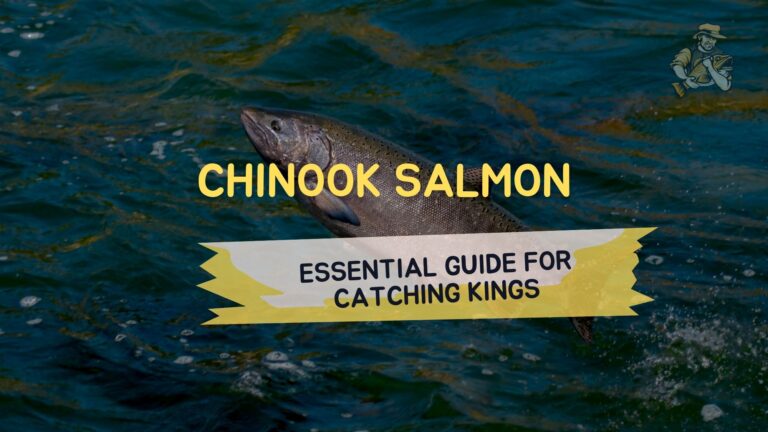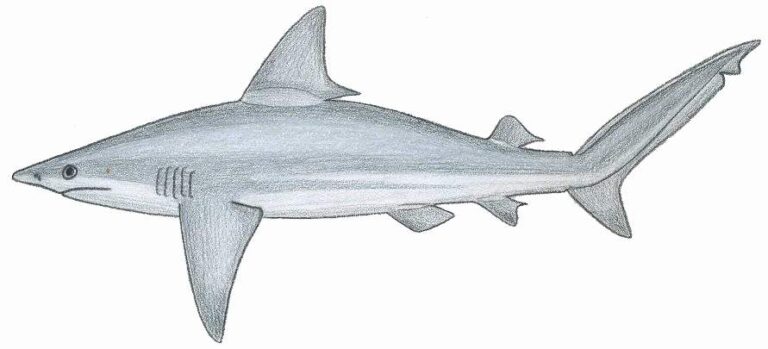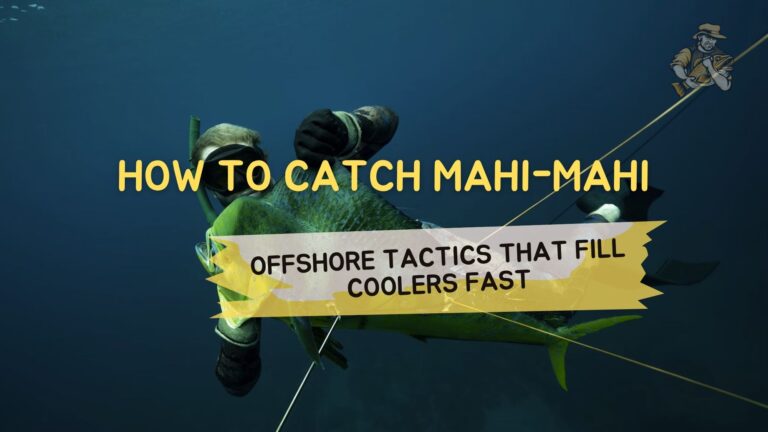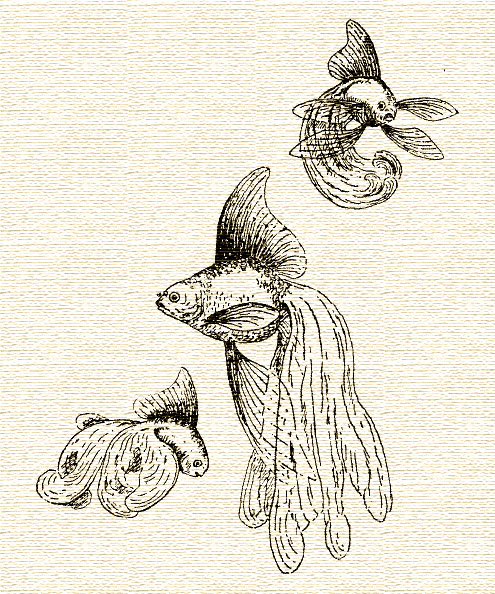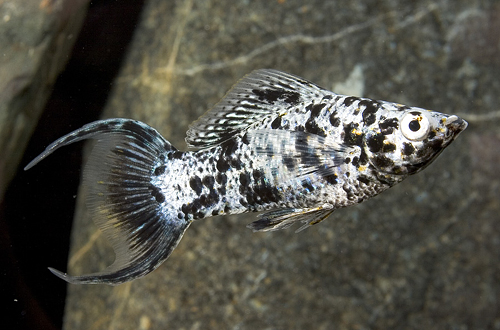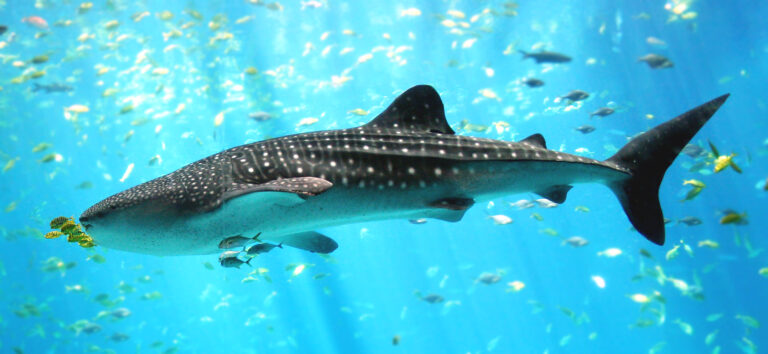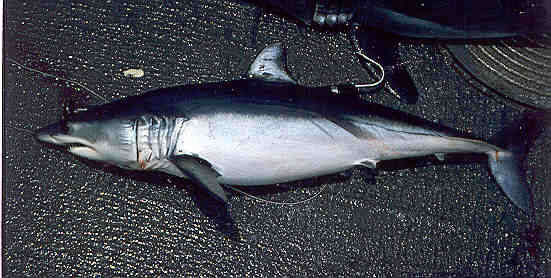7 Unusual Ways to Catch Trout in Lakes (That Most Anglers Miss)
By Adam Hawthorne | Last Modified: May 15, 2025
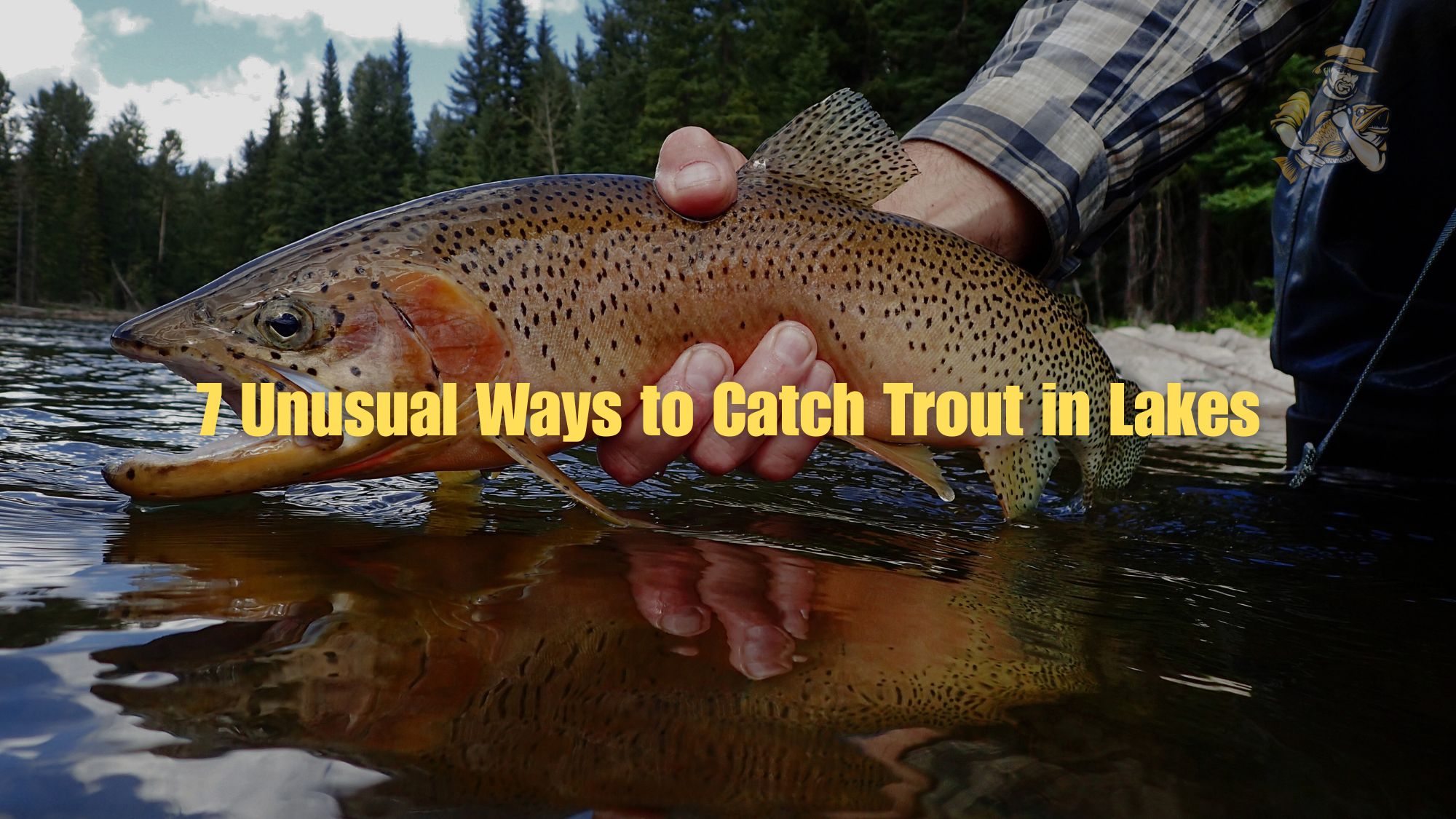
Chasing trout in lakes can be maddeningly difficult. Trust me, I’ve spent countless mornings staring at a dead rod tip while nearby anglers somehow fill their livewells. For my first decade of lake trout fishing, I was that guy who always came home with excuses instead of fillets.
That all changed during a frigid April morning on Lake Charlevoix about 15 years ago. I was fishing with my brother-in-law Mike, a notoriously tight-lipped angler who finally took pity on me after watching me get skunked three trips in a row. He showed me a technique so counterintuitive that I actually laughed when he suggested it – but the five rainbow trout we caught in the next hour shut me up pretty quick.
Since then, I’ve collected a bunch of unusual but devastatingly effective methods for catching lake trout that most weekend warriors never discover. These aren’t your standard “troll with flashers” or “use powerbait” tips that you’ll find in every fishing magazine. These are the weird, sometimes bizarre approaches that experienced lake anglers guard jealously.
Beyond the Obvious: Why Standard Lake Trout Tactics Often Fail
Before diving into the unusual techniques, let’s acknowledge why so many anglers struggle with lake trout. Unlike river trout, which are relatively predictable in their behaviors, lake trout are moody, mobile, and maddening.
The problem isn’t usually with the angler – it’s with the advice they’re following. Most lake trout guidance focuses on generalities that don’t account for the extreme sensitivity these fish have to subtle environmental changes. A technique that produces limits one day might be completely useless the next, not because you’re doing anything wrong, but because the invisible underwater variables have shifted.
I learned this lesson the hard way during a week-long trip to Higgins Lake back in 2018. I’d been crushing trout using deep-running crankbaits for three straight days, then suddenly – nothing. I stubbornly stuck with what had been working, convinced the fish would turn back on. My buddy Dave switched to a completely different approach (one I’ll share below) and proceeded to catch seven nice browns while I got skunked.
This leads to my first unusual approach…
1. Fish the Wind-Blown Shore (When Everyone Else Hides from It)
Most lake anglers curse the wind. It tangles lines, makes boat control difficult, and generally creates miserable fishing conditions. But for lake trout, especially in the warmer months, wind is your best friend – if you know how to use it.
Wind does two crucial things: it pushes floating food toward the downwind shore, and it creates turbulence that disguises your presence from wary trout. This combination can trigger aggressive feeding in otherwise lethargic fish.
I discovered this by accident during a particularly blustery day on Torch Lake when most boats had headed for shelter. My son Tommy had just gotten his first rod, and rather than disappoint him by canceling our trip, we decided to fish a small protected cove. On our way there, we passed a point taking the full brunt of 15-mph gusts. On a whim, I cut the motor and let us drift along the windward shoreline.
To my amazement, we hooked into four decent-sized rainbow trout in less than 30 minutes. While other anglers sought calm water, we’d stumbled upon a feeding frenzy. The trout were gorging themselves on disoriented minnows and insects pushed against the shoreline by wind-driven currents.
Here’s how to make this work:
- Find the shore where the wind is blowing directly into it
- Position your boat about 30-50 yards offshore (close enough to cast to the shallows)
- Cast directly toward shore and retrieve with the wind at your back
- Use lures that create erratic action (wind-blown baitfish move chaotically)
- Focus on points and shoreline irregularities where currents converge
This approach works especially well in lakes with decent clarity (4+ feet visibility) during late spring and summer. The chop on the water creates a perfect cover for opportunistic trout to ambush prey in surprisingly shallow water.
My favorite lure for this technique is a small, silver floating Rapala worked with an irregular retrieve – quick twitches followed by brief pauses. The wind action on your line will add natural movement that seems to drive trout crazy. I’ve had days where we’ve caught and released over 15 fish in a few hours using this method while other anglers struggled to get a bite.
2. The “Drop-Shot Vertical Jigging” Technique That Locals Don’t Share
Most lake trout presentations involve either horizontal movement (like trolling) or bottom bouncing. Here’s a method that combines aspects of both but with a crucial difference: absolute control over your bait’s movement.
I first saw this technique used by a crusty old guide on Lake Superior who charged clients $400 a day and consistently put them on fish when nobody else could. After buying him a few too many whiskeys at a Traverse City bar, he finally revealed his secret approach. I’ve adapted it slightly over the years, and it’s now my go-to method when trout get finicky.
It’s essentially a modified drop-shot rig, but vertically jigged with subtle wrist movements:
- Use a medium-light spinning setup with 6-8 lb fluorocarbon line
- Tie a drop-shot rig with a 1/4 – 3/8 oz tungsten weight at the bottom
- Place a small octopus hook about 12-18 inches above the weight
- Here’s the unusual part – bait with a 2-3 inch segment of nightcrawler, but thread it so it hangs perfectly straight
Most anglers using worms for trout create too much movement. Trout in lakes, especially larger ones, often prefer an almost motionless presentation with just hints of life. The vertical position allows you to impart incredibly subtle movements that trigger strikes when nothing else works.
When fishing this rig, lower it to the bottom, then reel up about a foot. Make tiny, almost imperceptible wrist movements that cause the worm to quiver rather than dance. The tungsten weight transmits even the slightest movements up to your bait, creating a presentation that looks like a vulnerable, injured food item rather than something actively swimming.
This works devastatingly well in deeper water (20-40 feet) particularly when targeting brown trout that have moved to summer depths. I’ve caught numerous 5+ pound browns on Crystal Lake using this method during July when surface temperatures push them deep.
The key is patience and sensitivity. You’re not trying to attract fish from a distance – you’re presenting an easy meal to nearby trout that might otherwise ignore more active presentations. Some days, the difference between success and failure is how subtle you can make your movements.
When my fishing buddy Steve visited from Ohio last summer, I showed him this technique on Glen Lake. He was skeptical until his rod nearly jerked out of his hands. “That’s not how we fish for trout back home,” he admitted as he landed a gorgeous 19-inch rainbow.
3. Micro-Jigging Through Suspended Trout (A Winter Technique That Works Year-Round)
Here’s a technique that’s stolen directly from ice fishing but works shockingly well during open water seasons too. Most anglers think of jigging as a vertical technique for deep water, but this micro-jigging approach uses tiny lures worked horizontally through the water column.
I stumbled upon this technique during a frustrating day on Lake Leelanau when the fish finder showed abundant trout suspended at 15-25 feet, but they wouldn’t touch traditional offerings. Out of desperation, I tied on a tiny 1/16 oz tungsten ice fishing jig tipped with a single waxworm – tackle I’d accidentally left in my vest from the previous winter.
What followed was nothing short of remarkable. I caught seven rainbow trout in the next two hours, all of decent size (14-17 inches). The subtle presentation triggered bites when nothing else would.
Here’s how to execute this unusual approach:
- Use an ultralight or light spinning setup with 4-6 pound test line
- Tie on a small tungsten ice fishing jig (1/32 – 1/8 oz)
- Tip with a single waxworm, small piece of nightcrawler, or tiny soft plastic
- Cast beyond where suspended fish are marked
- Count down to the appropriate depth
- Retrieve with a slow, subtle swimming action interspersed with tiny twitches
The key is maintaining depth control without using added weight that would ruin the delicate presentation. This requires practice and a sensitive rod tip to track the lure’s movement.
This technique absolutely shines during those “tough bite” days that follow weather changes, particularly in clearwater lakes like Torch Lake or Lake Charlevoix. The fish are still there, but they’ve switched to feeding on tiny prey items most anglers can’t effectively imitate.
My neighbor Jack was so impressed when I showed him this technique that he now carries a small box of ice fishing jigs in his tackle bag year-round. “It’s saved more summer trips than I can count,” he told me last week after using it to catch a limit of browns on Burt Lake when other boats were getting skunked.
4. The “Bubble and Fly” Method for Surface-Feeding Trout
This technique borders on the bizarre, combining elements of fly fishing with conventional gear. It’s particularly effective during insect hatches when trout are looking up, but you don’t have fly tackle (or the skills to use it effectively).
The setup looks ridiculous – I got plenty of strange looks the first time I tried it at Lake Bellaire during a heavy mayfly hatch. But those looks turned to envy when I started hooking fish after fish while conventional anglers struggled.
The rig consists of:
- A clear casting bubble (water-filled float) placed 3-5 feet above
- A small wet or dry fly (depending on what the trout are targeting)
- 2-4 pound fluorocarbon leader between the bubble and fly
The beauty of this setup is that it allows you to cast tiny flies using spinning gear. The water-filled bubble provides the necessary weight for casting, but creates minimal disturbance when it lands. Even more importantly, it lets you present flies at incredibly slow retrieval speeds that conventional lures can’t match.
I learned this technique from an old timer at Glen Lake who refused to switch to fly fishing despite the obvious advantage flies had during certain hatches. “Why spend thousands on new gear when a bubble does the trick?” he explained while outfishing everyone around him.
To fish this rig effectively:
- Fill the bubble about 2/3 with water (adjusting as needed for casting distance)
- Cast beyond rising fish or likely holding areas
- Let the fly settle (count to 10-30 depending on depth)
- Retrieve at an agonizingly slow pace with occasional slight twitches
- Watch for the bubble to move sideways or disappear (indicating a strike)
This past June during an intense caddis hatch on Lake Charlevoix, I used this method to catch and release 11 rainbows in a single evening. My daughter Emma was with me and caught her first trout ever on this rig – a beautiful 16-inch rainbow that put a serious bend in her light spinning rod.
What’s particularly strange about this technique is that it often outperforms actual fly fishing during certain conditions. The bubble creates a slight disturbance that can actually attract curious trout to your fly, especially in slightly choppy conditions where a subtle rise might be missed.
When fishing partner Mike visited from Wisconsin last summer, he was downright hostile to the idea of using this rig. “That’s not real fishing,” he insisted. After watching me catch four nice browns in an hour, he suddenly found the rig “interesting enough to try.” He landed a 20-inch brown on his third cast and hasn’t stopped talking about it since.
5. Night-Time Floating Minnows for Monster Browns
Most lake trout fishing happens during daylight hours, but some of the biggest brown trout I’ve ever caught came after dark using a technique that seems almost too simple to be effective.
I discovered this approach by accident about 12 years ago. I was camping at Platte Lake and decided to make a few casts before turning in. Using a large floating Rapala (F-13) in black and silver, I made a long cast from shore and let it sit. While reaching for my beverage, the rod nearly pulled out of my hands. The result was a 27-inch brown trout that remains one of my personal bests.
Here’s the strange part – I was barely retrieving the lure at all. Just an occasional twitch every 30 seconds or so, letting it float motionless most of the time. This contradicts almost everything you read about lure fishing, which typically emphasizes continuous movement.
Over the years, I’ve refined this night fishing technique for big browns in lakes:
- Use a large floating minnow bait (4-6 inches) in dark colors
- Cast from shore along drop-offs or near structure
- Let the lure sit completely motionless for 20-30 seconds at a time
- Give a tiny twitch, then another long pause
- Most strikes come during the pause after movement
The most unusual aspect is the retrieve rate – maybe 5-10 feet per minute, which feels painfully slow. But big brown trout, especially at night, often track prey for extended periods before striking, and the start-stop motion triggers their predatory instinct.
My fishing buddy Dave was absolutely livid when I first showed him this technique. He’d been throwing spinners and spoons all evening with no success while I landed three nice browns using what appeared to be a lazy fishing approach. “You’re barely even fishing!” he complained. Now it’s his go-to method for trophy browns.
This technique works best in lakes with healthy brown trout populations and abundant shoreline structure. The bigger the lake, generally the better, as larger systems tend to grow bigger browns. I’ve had particular success on Higgins Lake, Burt Lake, and Lake Charlevoix.
One warning – be prepared for vicious strikes. Since the lure is moving so slowly, trout don’t need to rush their attack. They can line everything up perfectly, resulting in hits that will test your drag system and possibly your heart rate.
6. The “Trout Magnet” Rig (Not the Brand, a Modified Setup)
This technique is so unusual looking that I was embarrassed to use it in front of other anglers for years. It involves a modified crappie-style presentation that looks nothing like traditional trout fishing, but it’s deadly effective, especially in heavily fished lakes where trout have seen every conventional lure.
I first saw something similar used by a guide on Gun Lake who charged premium rates and consistently put clients on fish. His setup looked so strange I had to ask about it. He was understandably guarded, but I pieced together the basics and have tweaked it over the years.
The rig consists of:
- A light or ultralight spinning rod
- 4-6 pound test line
- A 1/64 to 1/32 oz jighead in bright colors (hot pink or chartreuse)
- A 1-inch soft plastic body (Trout Magnet or similar)
- The unusual part: a 3-4 inch piece of fly line backing or bright yarn tied 2 inches above the jig as an attractant
This rig presents a tiny offering that doesn’t spook pressured trout, while the colored attractor above it draws their attention. It’s essentially the fish-catching principles of a fly fishing nymph rig adapted for spinning gear.
To fish it properly:
- Cast to likely trout holding areas (inlets, drop-offs, weed edges)
- Let it sink (count down based on depth)
- Retrieve with an unusual cadence: twitch-twitch-pause-twitch-long pause
- Most strikes come on the pause
What makes this approach so effective is its ability to trigger reaction strikes from otherwise inactive trout. The bright attractor gets their attention, but the tiny jig presents minimal threat, resulting in bites even during tough conditions.
I’ve had particular success with this method during midday hours in clear lakes, when conventional wisdom says trout won’t bite. Last July on Crystal Lake, I caught eight nice rainbows between 11am and 2pm using this rig while nearby trollers complained about the “midday shutdown.”
My brother-in-law Tom was particularly skeptical of this rig when I showed it to him. “Looks like something a 5-year-old would create,” he joked. After I outfished him 7-to-1 on our next outing, he suddenly decided it looked “quite sophisticated” and now keeps several pre-tied in his tackle box.
7. Drift-Fishing with “Neutral Buoyancy” Nightcrawlers
Of all the techniques I’ve developed over three decades of lake trout fishing, this might be the strangest – yet it’s produced more consistent results than anything else when conditions are tough.
Most anglers fish nightcrawlers either on the bottom or suspended under a bobber. This approach does neither – it presents worms at precisely the depth trout are holding with no added weight or flotation.
I stumbled upon this technique during a frustrating day on Lake Leelanau when I could clearly see trout on my fish finder, suspended at 22-27 feet, but couldn’t get them to bite conventional offerings. In desperation, I tried something weird – injecting air into a nightcrawler with a syringe to make it neutrally buoyant at the depth where fish were holding.
The results were immediate and remarkable. The properly “tuned” nightcrawler, drifting naturally at the exact depth of the suspended trout, produced strikes when nothing else would.
Here’s how to execute this unusual approach:
- Use a medium-light spinning setup with 6-8 pound fluorocarbon
- Hook a large nightcrawler once through the collar (not threading it)
- Using a small syringe (available at pharmacies), inject tiny amounts of air into the nightcrawler until it achieves neutral buoyancy in your livewell
- Add small split shot as needed to fine-tune the depth
- Drift with the wind or use a trolling motor at the slowest possible speed
- Let the neutrally buoyant worm do the work with minimal imparted action
The key is achieving that perfect neutral buoyancy so the worm drifts naturally at the target depth. It takes practice and frequent adjustments, but the natural presentation is unlike anything trout typically encounter.
My old fishing buddy Carl thought I’d lost my mind when he first saw me injecting worms with a syringe. “You’ve finally cracked,” he said. After watching me catch five nice rainbows in an hour using the technique, he sheepishly asked to borrow my syringe.
This approach is particularly effective when trout are suspended over deep water, such as during summer thermocline periods on larger lakes. The fish can see the offering from a distance, and the completely natural drift triggers strikes when more active presentations would spook them.
Recent field tests of innovative trout presentations documented catch rates when using various worm rigging techniques. Neutral buoyancy setups outperformed standard rigs by a significant margin during tough fishing conditions, particularly when targeting suspended fish.
I’ve had my greatest success with this method on Grand Traverse Bay and Torch Lake, where water clarity allows trout to spot the neutral worm from a distance, but the natural presentation doesn’t trigger their suspicion.
Lake Trout Fishing FAQs
What’s the best time of year to catch trout in lakes?
Spring and fall typically offer the most consistent lake trout fishing. During these seasons, water temperatures are ideal for active feeding, and trout often move into shallower, more accessible depths. However, using techniques like the neutral buoyancy nightcrawler or micro-jigging methods I described, you can catch lake trout even during challenging summer months when most anglers struggle.
How deep should I fish for trout in lakes during summer?
Summer lake stratification creates distinct temperature layers that concentrate trout. In most larger Michigan lakes, I find summer trout holding at the thermocline, typically between 25-45 feet depending on the lake. Using a fish finder is crucial – the thermocline often appears as a distinct band on your sonar.
What are the differences between fishing for stocked versus native trout in lakes?
In my experience, recently stocked trout tend to be less selective and more aggressive, often responding well to basic presentations like small spoons and spinners. Native or long-established trout develop more selective feeding patterns and respond better to the unusual techniques I’ve described, particularly the modified Trout Magnet rig. Native fish also tend to be more structure-oriented and weather-sensitive, making the wind-blown shore technique especially effective.
Is lake trout fishing better from shore or a boat?
Both approaches have merit depending on the circumstances. Boats obviously provide access to more water, but shore fishing has distinct advantages during certain conditions. My most productive shore fishing has been during low-light periods using the nighttime floating minnow technique or during strong winds using the wind-blown shore approach. That said, techniques like the neutral buoyancy worm or vertical drop-shot jigging really require a boat to execute properly.
Putting It All Together: How to Choose Which Unusual Method to Use
With seven unusual techniques at your disposal, how do you know which to employ on any given day? Here’s my decision process developed over hundreds of lake trout trips:
- Check wind conditions first – if it’s blowing 8+ mph, the wind-blown shore technique gets priority
- During active insect hatches, the bubble-and-fly method is hard to beat
- For heavily pressured waters, go with the modified Trout Magnet setup
- When fishing depths of 20+ feet for suspended fish, try the neutral buoyancy nightcrawler
- During tough post-frontal conditions, micro-jigging shines
- For night fishing opportunities, floating minnows for browns is the way to go
- When all else fails, the drop-shot vertical jigging approach is the most consistent producer
I don’t claim these methods will work on every lake in every condition. Fishing remains a puzzle with constantly changing variables. But having these unusual approaches in your arsenal gives you options when conventional wisdom fails – which happens more often than most fishing articles admit.
My collection of unusual techniques came from years of frustration, experimentation, and occasional luck. I’ve been that guy with the empty livewell, watching others catch fish and wondering what secret they knew that I didn’t. If you’ve been there too, I hope these methods give you the edge you’ve been looking for.
Lake trout can be maddeningly difficult, but they’re not impossible. Sometimes, the difference between success and failure is simply the willingness to try something that looks wrong but feels right.
Last summer, I took my daughter Emma to Burt Lake for her birthday fishing trip. Conditions were tough – bright skies, no wind, and heavy fishing pressure. After an hour without a bite using conventional methods, I rigged her up with the modified Trout Magnet setup. The look on her face when she hooked into a chunky 18-inch rainbow was worth every skeptical stare from nearby boaters wondering what on earth we were doing.
“Dad, I thought you said trout were hard to catch,” she said, beaming with pride. I just smiled. Sometimes the fish are easy – if you’re willing to look a little silly in the process.

Meet Adam Hawthorne
I’m a lifelong fishing enthusiast who’s spent years exploring rivers, lakes, and oceans with a rod in hand. At Fishing Titan, I share hands-on tips, honest gear reviews, and everything I’ve learned about fish and ocean life, so you can fish smarter and enjoy every cast.
Share:

Meet Adam Hawthorne
I’m a lifelong fishing enthusiast who’s spent years exploring rivers, lakes, and oceans with a rod in hand. At Fishing Titan, I share hands-on tips, honest gear reviews, and everything I’ve learned about fish and ocean life, so you can fish smarter and enjoy every cast.
Related Articles
-
Chinook Salmon: Essential Guide for Catching Kings
There’s something almost magical about the moment when a Chinook salmon takes your lure. That heart-stopping tug, followed by a run that can strip yards…
-
Sandbar Shark
The Sandbar Shark (Carcharhinus plumbeus) stands as one of the most recognizable and ecologically significant members of the requiem shark family along temperate and tropical…
-
How to Catch Mahi-Mahi: Offshore Tactics That Fill Coolers Fast
I still remember my first encounter with mahi-mahi (also called dolphin fish or dorado). We were about 20 miles offshore from Key West on a…
-
Veiltail Goldfish
The Veiltail Goldfish stands as one of the most distinctive and graceful varieties within the goldfish family, renowned for its characteristic flowing, gossamer-like tail fins…
Fish Species
-
Lyretail Molly
The Lyretail Molly (*Poecilia latipinna*) stands as one of the most recognizable and ecologically significant freshwater fish species in North American aquatic ecosystems. This vibrant…
-
Delta Tail Betta
The Delta Tail Betta (Betta splendens) represents one of the most recognizable and sought-after varieties within the aquarium trade, distinguished by its dramatic triangular caudal…
-
Whale Shark
The whale shark (*Rhincodon typus*) stands as the ocean’s largest fish species, representing one of nature’s most remarkable gentle giants. Despite its imposing size, reaching…
-
Shortfin Mako Shark
The Shortfin Mako Shark stands as one of the ocean’s most remarkable predators, combining exceptional speed with sophisticated hunting capabilities that have evolved over millions…

